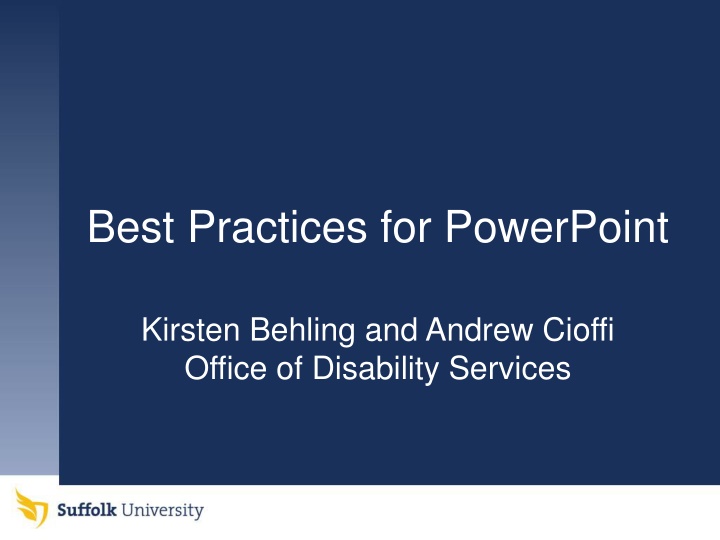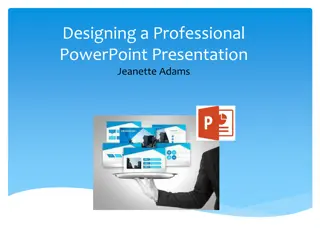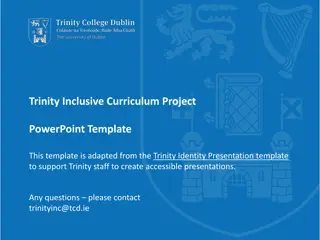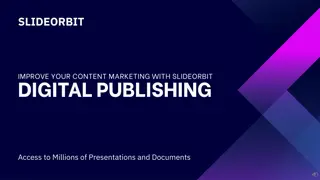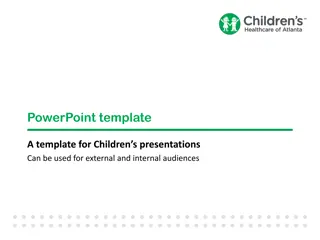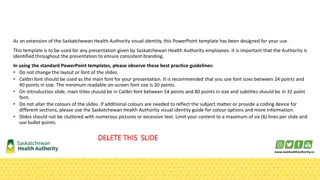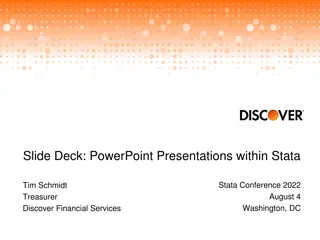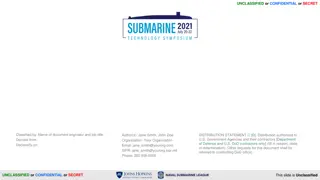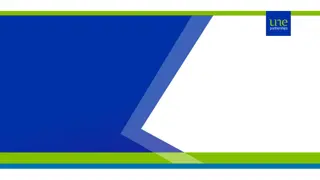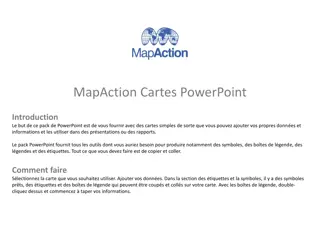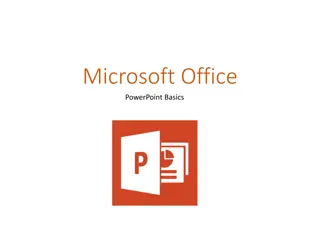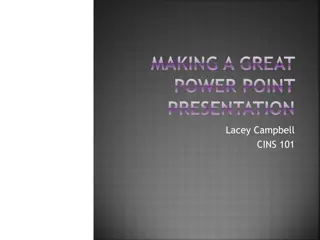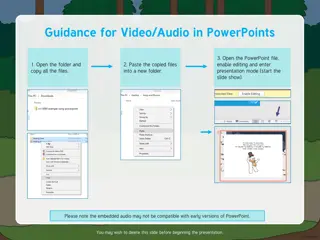Best Practices for PowerPoint Presentations
Create effective PowerPoint presentations by following best practices such as using simple layouts, organizing content logically, using appropriate fonts and colors, providing alt tags, narrating slide content, and using proper templates. Examples of effective practices are provided along with tips for improvement. Contact the Office of Disability Services for assistance.
Uploaded on Feb 21, 2025 | 0 Views
Download Presentation

Please find below an Image/Link to download the presentation.
The content on the website is provided AS IS for your information and personal use only. It may not be sold, licensed, or shared on other websites without obtaining consent from the author.If you encounter any issues during the download, it is possible that the publisher has removed the file from their server.
You are allowed to download the files provided on this website for personal or commercial use, subject to the condition that they are used lawfully. All files are the property of their respective owners.
The content on the website is provided AS IS for your information and personal use only. It may not be sold, licensed, or shared on other websites without obtaining consent from the author.
E N D
Presentation Transcript
Best Practices for PowerPoint Kirsten Behling and Andrew Cioffi Office of Disability Services
Overview List of Best Practices Examples of less effective practices followed by better practices Comment boxes provided throughout
List of Best Practices All slides have simple layouts Content is organized in a logical structure Fonts larger than 14pt; Sans serif font High contrast color combinations Ample white space Alt tags on visual elements
List of Best Practices Narrations discuss slide content, relate to theme Add transcript of narration to notes section All hyperlinks have meaningful descriptions No slide transitions or automatic timing Use proper/provided slide templates
The Office of Disability Services (ODS) 73 Tremont St. 7thFloor (617) 994-6820 disabilityservices@suffolk.edu Kirsten Behling, Director Andrew Cioffi, Assistant Director Rebecca Kmiec, Office Coordinator ODS serves all students with disabilities at Suffolk University
The Office of Disability Services (ODS) Contact: 73 Tremont St, 7th floor (617) 994-6820 disabilityservices@suffolk.edu Staff: Kirsten Behling, Director Andrew Cioffi, Assistant Director Rebecca Kmiec, Office Coordinator
Assistive Technology Categories Aids for daily living Communication/Augmentative communication Computer applications Environmental control systems Home/Work site modifications Instructional learning materials Leisure time or recreational adaptations Mobility aids Prosthetics and orthotics Seating and positioning aids Sensory aids Vehicle modifications http://resna.org/home/resna-search- results.dot?cx=002481192332656810519%3Aam5wqqggmdq&cof=FORID%3A10&ie=UTF- 8&q=assistive+technology&sa=+Go+&siteurl=www.resna.org%2F&ref=&ss=3316j926054j20
Assistive Technology, Categories Aids for daily living Communication/Augmentative communication Computer applications Environmental control systems Home/Work site modifications Instructional learning materials Leisure time or recreational adaptations Mobility aids Prosthetics and orthotics Seating and positioning aids Sensory aids Vehicle modifications RESNA categories Rehabilitation Engineering and Assistive Technology Society of North America
